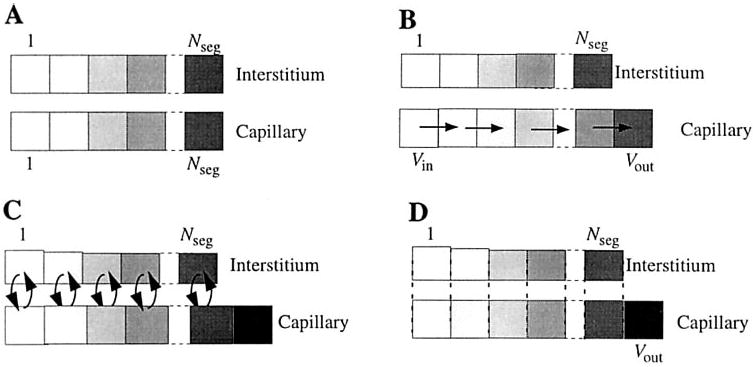Fig. 4.

Outline of steps for numerical computation of model solutions at Nseg axial segments in capillary and interstitium. The cellular region is segmented in the same manner as the interstitial region, but is omitted from the figures for clarity. A: regions are initially divided into Nseg axial segments of equal volume. B: axial convection occurs with a time step chosen to match the time needed for fluid to move exactly 1 segment downstream. At each time step, the first capillary segment is filled with inflowing fluid (Vin), and the other segments are each displaced by one to the right, and the end segment slides to the outflow (Vout). C: radial fluid and solute exchange occurs among regions. Because the capillary is modeled as a constant volume, net volume influx into the capillary segments causes axial expansion, whereas net volume efflux from capillary to ISF causes axial shrinkage. D: the final operation with the time step is to recalculate the contents of the expanded or shrunken volumes associated with each capillary segment to match the contents to the original spatial grid; Vout is the outflow from the BTEX region during this time step.
